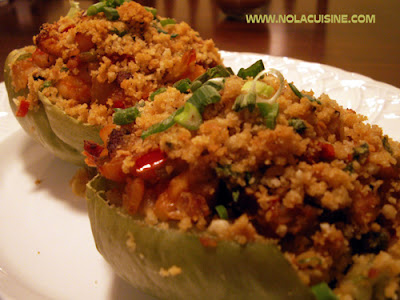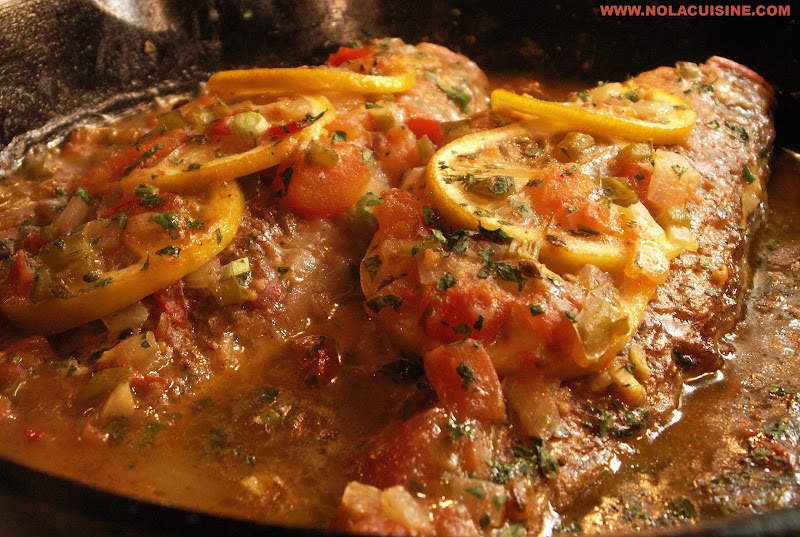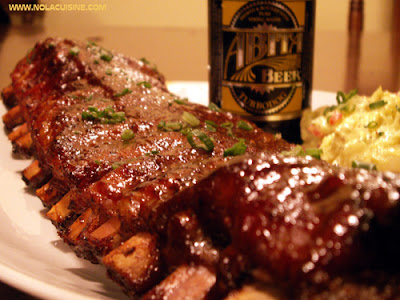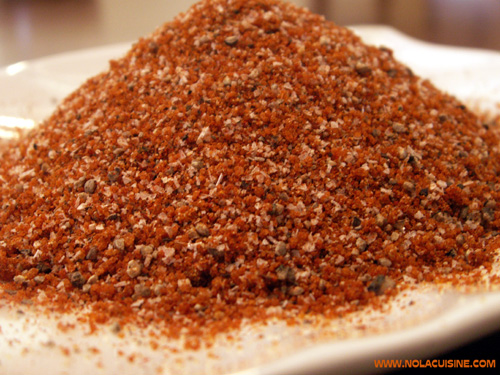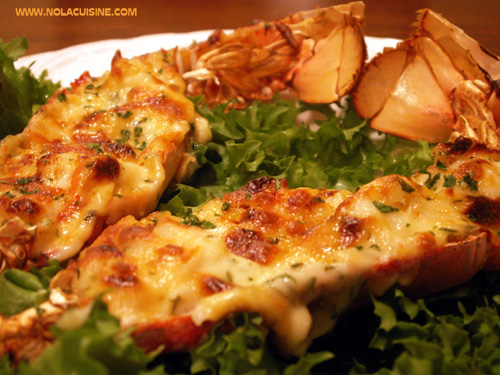| From Nola Cuisine Images – (reedited) |
Maque Choux (pronounced Mock-shoe) is creamy, rich stewed corn dish that is most certainly Cajun. The trick to good Maque Choux is using very fresh corn so that you can scrape the pulp and milk out of the cobs which will give the dish it’s distinctive creaminess.
I also like to add some Tasso as a seasoning meat for the pleasant smokiness that it adds to the dish. Bacon also works well, and by all means substitute Bacon drippings for the unsalted butter if you like. Here is the recipe:
Maque Choux Recipe
4 Tbsp Unsalted Butter
1/4 cup Tasso, finely diced
3 Ears of Corn
1/2 cup Onion, finely diced
1/4 cup Celery, finely diced
1/2 cup Green Pepper, finely diced
1 Tbsp Fresh Thyme leaves
1/8 cup Garlic, minced
1 Cup Tomato, diced
1/2 Cup Green Onions, finely sliced
Kosher salt, black pepper and Cayenne to taste
Cut the corn off the cobs using a very sharp knife. The trick is to cut about half way through the kernels, then go back and scrape the cobs with your knife to extract all of the milk into a bowl. Reserve the corn milk.
Melt the butter in a two quart sauce pan, add the Tasso and cook on medium-high heat until slightly brown. Add the corn, onion, celery, bell pepper, Thyme and a healthy pinch of salt and reduce the heat to medium. Cook stirring often for about 15 minutes, or until the vegetables are tender.
Add the garlic, tomatoes, reserved corn milk and another pinch of salt. Cook for another 15 minutes, stirring occasionally.
Add the green onions, salt, black pepper and cayenne to your taste.
Serves 2-3.
Be sure and check out my Index of Creole & Cajun Recipes which provides links to all recipes featured on Nola Cuisine!

